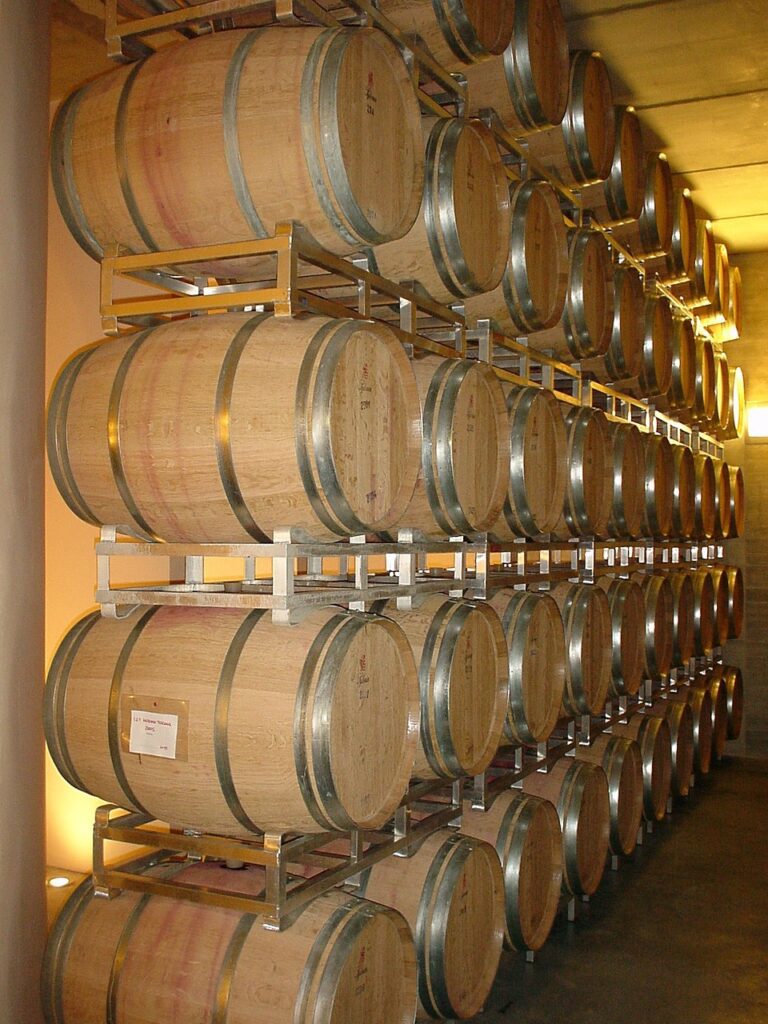WINETECH VINE & WINE INNOVATION WATCH
What is pulsed electric field (PEF) treatment?
Application of short nano- to millisecond pulses of high electric field strength to destemmed and crushed grapes, musts or wine with the aim to cause permeabilisation of grape or microbial cell membranes.
What are the objectives of PEF treatment on grapes?
According to Resolution OIV-OENO 634-2020 it is:
- to facilitate and increase the extraction of valuable substances such as polyphenols in the case of red grapes, yeast assimilable nitrogen, aroma compounds including precursors, and other substances located in the grape cells, and
- to reduce the maceration time of red grapes.

What are the objectives of PEF treatment on musts?
According to a Provisional Draft Resolution of the OIV it is:
- to eliminate microorganisms that are present in must and during fermentation that can cause spoilage or contamination, and
- to stop alcoholic fermentation in the production of wines with residual sugar in order to reduce SO2 doses used for this purpose.
What are the objectives of PEF treatment on wines?
According to a Provisional Draft Resolution of the OIV it is:
- to eliminate spoilage microorganisms present in the wine,
- to postpone the start of malolactic fermentation (MLF) to allow for micro-oxygenation between the end of alcoholic fermentation and the start of MLF without the use of SO2 or any other additive, and
- to block MLF for wines intended for distillation.

How does PEF work?
PEF treatment is a continuous process where short microsecond pulses of high electric field strength are applied to a pumpable beverage flowing between two electrodes.
The treatment causes irreversible damage to grape cells and microorganism cells by damaging the cell membranes and thereby causing the loss of intracellular fluids.
The bigger the size of the cells, the more susceptible they are to being damaged by PEF treatment.
What are the advantages of PEF treatment on crushed grapes?
Damage to grape cells through PEF treatment have shown to increase anthocyanin and tannin concentrations, as well as allow for shorter maceration times in red wines.
What is the effect of PEF treatment on microbial inactivation?
The flow rate, the frequency of the pulses and the field strength of the PEF treatment, together with the wine composition and the specific microorganism specie and strain, determine the level of microbial inactivation.
It was shown that PEF treatment can lead to a significant reduction in the concentrations of Brettanomyces, Saccharomyces and non-Saccharomyces yeast species. It does not eliminate these species.
Similar results were obtained for PEF treatment of bacterial species, but in general it was observed that the smaller bacteria cells seem to be more resistant to inactivation than yeasts.
Does PEF treatment have any impacts on wine quality?
Studies have shown that PEF treatment has no negative impact on wine sensory qualities.
What other food and beverage industries use PEF treatment during production?
Olive oil, potato chips, vegetables, French fries, veggie chips, dried fruit, juices, and smoothies and milk.
Is PEF treatment for grapes, musts and wines available commercially?
Yes, the German company Elea, who sells PEF systems for various food and beverage industries, also sells PEF equipment specifically for wine-related applications.
According to their website in addition to the advantages already mentioned, it also enhances ageing on lees, an application not yet mentioned in any of the OIV draft or final-accepted resolutions.
PEF treatment for wine is not yet available in South Africa, but the local distributor of Elea PEF treatment, Albrecht Machinery, is investigating the possibilities in South Africa.
If a viable possibility exists, an application to have it legalised for use in winemaking will need to follow.
What is the significance of this technology?
PEF technology can potentially improve cellar processes by saving time and energy. It can also potentially lower the use of sulphur dioxide in winemaking and help prevent wine spoilage.

References
Silva, F.V.M. & Van Wyk, S., 2021. Emerging non-thermal technologies as alternative to SO2 for the production of wine. Foods 10, 2175. https://doi.org/10.3390/foods10092175
Resolution OIV-OENO 634-2020: Treatment of grapes by pulsed electric fields (PEF).
Draft OIV Resolution: Microbial stabilisation of musts by pulsed electric fields (PEF).
Draft OIV Resolution: Microbial stabilisation of wines by pulsed electric fields (PEF).
https://elea-technology.com/wine/
– For more information, contact Karien O’Kennedy at karien@winetech.co.za.
Click here to get your copy of WineLand Magazine and here to subscribe to our newsletter.
Vine, Vine, Vine, Vine, Vine, Vine, Vine, Vine,













